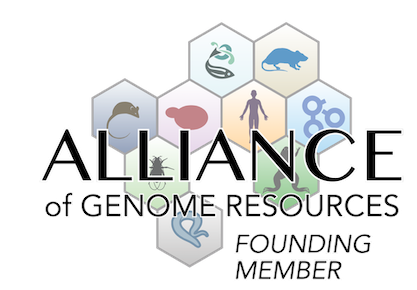Phenotypes associated with this allele
Allelic
Composition |
Arxtm5Kki/Y
|
|
Genetic
Background |
involves: 129S/SvEv * C57BL/6J |
|
| Find Mice |
Using the International Mouse Strain Resource (IMSR)
Mouse lines carrying:
Arxtm5Kki mutation
(0 available);
any
Arx mutation
(20 available)
|
|
|
nervous system
|
N |
• no increased apoptosis is detected in the ganglionic eminence at E12
• mice do not develop intranuclear inclusions
|
|
|
• no ChAT+ interneurons are present in the striatum
|
Allelic
Composition |
Arxtm5Kki/Y
|
|
Genetic
Background |
involves: 129S/SvEv * C57BL/6NHsd |
|
| Find Mice |
Using the International Mouse Strain Resource (IMSR)
Mouse lines carrying:
Arxtm5Kki mutation
(0 available);
any
Arx mutation
(20 available)
|
|
|
mortality/aging
 |
• only 15% survive to P70
|
 |
• first death occurs at P15, with only 64% of mice being successfully weaned, and with only 15% surviving to P70
• a large cohort of males die around weaning age
|
growth/size/body
 |
• lower body weight throughout development and growth, with weight fluctuations often seen pre- and post-seizure
• mice weigh 80% of control at P5, 71% of control at weaning, and 80-90% of control between P35 and P70
|
behavior/neurological
 |
• mice travel less total distance and spend less time in the inner quadrants of the open field compared to controls, suggesting decreased exploratory behavior
|
 |
• mice travel greater distance and spend more time on the open arm of the elevated zero maze indicating increased exploratory behavior
|
 |
• mice exhibit reduced spatial learning and memory in the Y-maze and Barnes maze, showing no preference for the novel arm in the Y-maze, an increase in time to locate the escape hole in the Barns maze and no preference towards the previously learned (familiar) or rotated (novel) location of the escape hole
|
 |
• mice travel less total distance and spend less time in the inner quadrants of the open field, suggesting increased anxiety
• mice often freeze up during testing in the Barnes maze, indicative of increased anxiety-like behavior to open spaces and often find the escape hole through non-directed movement rather than exploration
|
 |
• mice exhibit decreased fear response in the elevated zero maze, traveling a greater distance and spending more time in the open arm
|
 |
• 47% of mice show one or more movement phenotypes (such as jumpy or erratic movements when handled or provoked, rapid uncontrolled movement around the cage, twitching ears, straight tail, or increased facial grooming), either singularly or in combination with a myoclonic seizure at 1 month of age which progresses to 76% of mice at P70
|
 |
• mice show reduced locomotor activity in the open field
|
 |
• mice show reduced sociability and social novelty, showing reduced interaction time within the chamber, regardless of the occupant
|
 |
• mice show reduced social novelty, showing reduced interaction time with the novel mouse
|
 |
• any interaction with a stranger or familiar mouse is at a greater distance
|
 |
• spontaneous electrographic seizures are seen in all mice
• the electrographic seizure discharge is accompanied behaviorally by myoclonic jerks and/or repetitive forelimb clonus, and in some cases, continuous convulsive motor activity
|
 |
• first myoclonic seizures are seen at P19 during handling of mice
• by P21, 42% of mice exhibit myoclonic seizures
• at P70, 97% of mice exhibit spontaneous seizure activity
|
muscle
 |
• first myoclonic seizures are seen at P19 during handling of mice
• by P21, 42% of mice exhibit myoclonic seizures
• at P70, 97% of mice exhibit spontaneous seizure activity
|
nervous system
 |
• spontaneous electrographic seizures are seen in all mice
• the electrographic seizure discharge is accompanied behaviorally by myoclonic jerks and/or repetitive forelimb clonus, and in some cases, continuous convulsive motor activity
|
 |
• first myoclonic seizures are seen at P19 during handling of mice
• by P21, 42% of mice exhibit myoclonic seizures
• at P70, 97% of mice exhibit spontaneous seizure activity
|



 Analysis Tools
Analysis Tools
